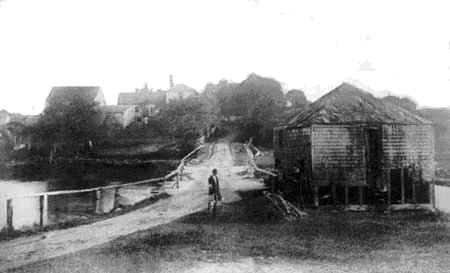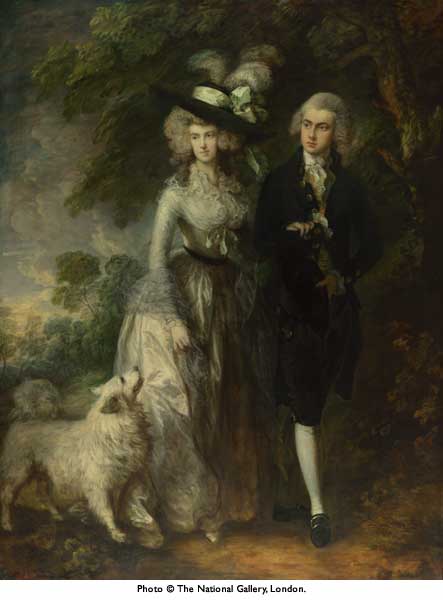|
Andrew Hallett Jr. was born in 1626 in Symondsbury, Dorsetshire, England and died mar,16,1684 in Yarmouth, Mass.
Andrew Hallett Jr. married Ann Besse She married Andrew in 1645 in Barnstable,
Massachusetts.. She was the daughter of Anthony Besse of either Lynn or Sandwich. She was only fourteen years old when
they married, but she was said to be a strong healthy woman, and that she was the mother of twins before her fifteenth birthday.
On the day following the birth of her children she requested her mother, who acted as nurse, to take care of the babies while
she went out to seek birds eggs for them. The grandmother at that time could not have been over thirty, for she had children
of her own fifteen years younger than her grandchild Abigail, and if Ruhama was one of the twins, not far from twenty. They
lived in Sandwich until July 28, 1640, when he sold his farm to Daniel Wing and Andrew moved to Yarmouth,
where he lived until his death in 1684. Following in the Hallett tradition which had been established by his father, Andrew
Jr. eventually became the largest land holder in Yarmouth, owning about three
hundred acres of the best lands and meadows in the town. He owned so much property on both sides of the main lane that it
was eventually named " Hallett Street," which it is still called today.
He also owned lands and meadows in Barnstable, 1000 acres in Windham,
Conn., and approximately 500 acres more just outside Yarmouth.
Andrew Hallett Jr. did not acquire his wealth by official services.
His name frequently occurs on the records, but not in connection with any office that boasted much honor . In 1642, '56
and '58 he was a surveyor of highways; in 1651 and 1679 constable. In 1659 he was appointed by the Court as a member of
a committee to raise money for the support of the ministry in Yarmouth. In 1660,
'67 and '75 he was on the grand jury; and Oct. 30, 1667 he was appointed by the Colony Court,
at the request of the town, a member of the land committee of Yarmouth. None of
these are offices of honor or profit; but they show that he was a man in whom his neighbors had confidence, that he was a
man of common sense and sound judgment. As a young man he was unable to write, yet soon after he came to Yarmouth he
acquired that art. In 1659 you can find his name subscribed to the verdict of a jury of inquest. He
took the oath of fidelity while a resident in Sandwich, and his name and that of his father appears
on the list of those who were able to bear arms in Yarmouth in August 1643. On
the criminal calendar his name does not appear. In those times the most trifling faults were noted, and he who escaped a prosecution
must necessarily have lived a blameless life. He also kept his name off of the civil docket. He was a member of the
church in Yarmouth. He often attended the meetings of Mr. Lothrop, and Mr. Walley,
and some of the members of his family afterward joined the Barnstable church. One of the major points of interest which ran through the Hallett family was the type
of houses in which they lived. Andrew Hallet Jr.'s house is described thusly by Amos Otis: "The house which he bought of Gyles
Hopkins in 1642, was probably the same that Mr. Stephen Hopkins built in the summer of 1638, and if so, was the first house
built by the English on Cape Cod below Sandwich. it was small and poorly constructed,
and was occupied as a dwelling not many years.... It probably contained at first only one room. The excavation into the hill,
and the chimney, covered nearly the whole of the west side, and the other three sides were covered with hand-sawed or hew
planks, and the roof with thatch. The walls were not shingled on the outside, or plastered on the end. The seams in the boarding
were filled or "daubed" with clay. Oiled paper supplied the place of glass.
The second house in which Andrew Hallett Jr.
resided in Yarmouth stood on the west side of the mill road. Andrew Hallett built
the house himself. The new house was built on a little knoll, and fronted due south, as all ancient dwellings did because
it secured two objects which was considered essential: the rays of the sun at
noon, or dinnertime, as they called that hour of the day, shone parallel with the side of the house, and their great room
in which they lived, was on the sunny or warm side of the house. The chimney was uniformly built on the west side, and projected
outside of the frame. The exact size of Andrew Hallett's new house cannot be stated accurately: it was about 22 feet by 26
on the ground, and was only about one or one and one-half stories high. The "great room" about 17 feet square, occupied the
southeast corner. The fireplace was eight feet wide and four deep, and the mantle, which was of wood, was laid about five
feet and a half high, so that the family could pass to the oven, which opened on the back of the fireplace near the south
corner. There was a small kitchen or work room at the northwest corner; at the northeast corner a small pantry, with a trap
door leading to the cellar. Between the pantry and the great room was a bed-room, the floor of which was elevated about two
feet, to give greater depth to the cellar. The bed occupied near all the space, and it was so low in the walls that a tall
person could not stand upright therein. A ladder in the front entry led to the chamber, which was occupied for weaving and
lodging rooms. No part of the house was ever painted or any of the rooms papered. The windows were of small diamond shaped
glass set in lead. No blinds or curtains were needed, and none were ever used. The furniture of the house was for use, not
for show. He had one of the lushest orchards in Massachusetts, setting goals
for others to try to achieve. He had Kentish Cherry trees brought over by the Pilgrims, which rapidly multiplied by suckers
and were set on the outer edge to protect the other less hardy trees. He raised apple trees from seeds, brought from England.
The pignose a good winter apple was the most productive. The Foxwell was a fall apple of fair quality. He also had pear trees,
raised from seeds, but they did not prove to live long. He also had French sugar pear trees, which he grafted into the poorer
pear seedlings and which survived quite well. 'Goodman' Hallett, as he was called, was referred to as a husbandman. By honest
industry, skillful management and economy, he accumulated a large estate. In 1676 his tax was one twentieth of the taxes of
all of Yarmouth. He was a very practical man. The furniture in his house
bore witness to his belief that "nothing was valuable that was not useful." "A large house makes a slave of the wife, and
elegant furniture drouges of the daughters," he was quoted as saying to his neighbors. He had Indian servants who assisted
him in the labors of his fields. He never expected them to do anything he was not willing to do himself. When asked why he
lived in so small a house, he is said to have replied, "Comfort lives in a small house and needs no servants: care in a large
one, and requires many." He was also very cautious of spending money. "Daylight," he would say, "was cheaper than candlelight"
and as soon as the day broke he was up and dressed. He was a man of faith, beginning each day around the breakfast table with
the odler daughter reading a passage from the Bible, singing a few stanzas from a favorite hymn and Goodman Hallett kneeling
down in prayer, asking God's blessing and protection on his country, his church, his household and his dear friends in England.
He loved to tell stories to his children about "home," as he called Old England. He was handy with all types of chores, from
the making of andirons for the fireplace to the making of shoes for his family. He demanded the same industrious spirit from
his wife and children. "The girl who did not know that the dishwater should be heating during meal time is unfit to be married,"
he told his daughter, Abigail, when she was in her teens. His wife was an expert weaver and seamstress, a craft which was
handed down to many future generations. "Goodman" Hallett died in the spring of 1684. He was at least 70 years of age. All
of his children had married and left home...." The inventory of the estate was appraised by John Miller and John Thacher on
19 May 1684 and signed by his widow, Ann Hallet 31 May 1684. Ann Hallett continued to live in the easterly part of the
house; her grandson John Bourne lived with her and her son Jonathan occupied the west part of the house. She died in the spring
of 1694, leaving a will dated June 23, 1684. Her wearing apparel, consisting of articles of wool, linen and silk, hose shoes,
hat, etc., was appraised at L15-00-00 or 50 dollars in silver money, showing that on the Sabbath and holidays she dressed
in great style.
Andrew Jr. and Anne’s children were
Mehitable Hallett, Abigail Hallett, Ruhamah Hallett, Dorcas Hallett, John Hallett
and Jonathan Hallett Sr. (who is the next descendant in my blood line.)

Pictured
above:
Looking
toward Keveney Lane in Cummaquid, this image shows Mill Pond with the "old mill" in the foreground. Mill Pond, originally
called Stony Cove or Stony Creek, was one of the earliest settled areas in Yarmouth, home to original settlers including Andrew
Hallet jr. Little is known about the old mill, which is believed to have been a grist mill. The mill was blown down in
a gale as reported by the Yarmouth Register.
Related Links:
|
